- Health
- Posted
Health in the home
Whether we reside permanently in an existing residence or are looking to build a new home, it is vital that we consider the well being of the occupants as well as the environment. RTE presenter Duncan Stewart stresses the importance of a healthy home.
“It is so important that we bring in healthy materials to our homes"!, says Stewart, “we should minimise toxicity”. Through simply thinking about what we bring into our homes we can easily minimise common contaminants. Stewart advises that products such as varnishes and preservatives, basic glues, formaldehyde glues and glues in furniture can cause health problems, and suggests the use of alternatives such as healthy water based paints wherever possible. Stewart also warns against the unnecessary use of preservatives in timber. “In wood we should not use preservatives unless necessary. The type of preservatives that we use should ideally be of a low health risk. Preservatives should only be used outside where the wood is exposed or in a crucial area”.
Stewart stresses that our concerns should also include the use of plastic in the home, stating “it is important that we minimise plastics in our homes to essential items only”. In addition to the detrimental effects plastic has on the environment, it can also be responsible for physical discomfort. Strong smelling plastics are likely to cause headaches and feelings of nausea.
Furthermore, Stewart warns against the excessive use of electronic devices in our homes, as when left in operation for long periods of time they are capable of heating up and emitting vapours along with electromagnetic radiation. To avoid problems such as these we should always unplug appliances such as television sets and stereo systems at the power point when not in use.
In addition to thinking about what we bring into our homes, Stewart urges us to also limit our house’s output, with regard to the emissions its running can produce. Flue gas is a common pollutant released directly from our home into its surroundings. Stewart explains that flue gases are especially harmful in inversion conditions where the area may suffer from smog. “Often you get smoke and particulates from coal or oil fuels, building up major quantities of sulphur dioxide, nitrogen dioxide, volatile organic compounds and carbon monoxide”, he says. “Cars also add to the problem. These emissions should be minimized. We have smoke free zones, however this only gets rid of the particulate, the dust, but not the gases that are often invisible and colourless”.
When considering the health of our homes form a structural point in relation to dampness and comfort. “On one level, when we talk about air tightness, it is important that we keep our houses air tight to the highest standard”, states Stewart. “There are huge problems caused by lack of air tightness and wind tightness, however our houses should be able to breathe. In essence, this involves air tightness but breathability, meaning that the outer layers breathe out so that dampness and humidity do not build up within the structure and cause problems. This is especially relevant to timber frame construction”. In addition to these concerns, Stewart stresses the role that ventilation plays in a healthy home, stating that “poor ventilation is one of the main reasons that allergies are increasing. It is the single biggest problem in this regard”.
The alternative to having sufficient ventilation in our homes is condensation and rising damp. According to Stewart both of these problems are common in Irish homes. “In about 70% to 80% of cases, complaints about dampness and mildew are due to condensation” says Stewart. “Condensation is the result of badly insulated houses”. The process of condensation occurs when heat escapes and the more humid air condenses onto colder surfaces. This is most prevalent in winter when we are constantly heating our houses. “Good insulation is critical”, explains Stewart. “Background ventilation and heating are necessary also, to maintain conditions. Bedrooms, showers and kitchens all need suitable ventilation”.
Stewart believes that ventilation is commonly bad in Ireland because we are constantly trying to draft seal everything in an attempt to prevent wind infiltration. Opening windows is a simple and free answer that Stewart suggests when faced with bad ventilation, particularly with regard to areas heated by open fires and gas generated fires that often consume a room’s oxygen.
Stewart also suggests the use of a heat recovery ventilation system. He describes this system as a box that intakes air from the outside and heats it by the air that is being extracted. There are various types of heat recovery systems, including those that come with a built in heat pump; in this case the system can be used as a very efficient way of increasing the intake of air temperature. Stewart explains that this allows cheap heat, comfort, air change and filtering.
It is easy to have and maintain a healthy home, which in turn will lead to a healthier lifestyle for ourselves and our families. Through putting a little thought and common sense into our daily actions and purchases we can minimise health problems, and simultaneously help the environment.
Keeping our eyes open to potentially harmful factors in our homes, through following Stewart’s advice regarding products, appliances, emissions, air tightness and ventilation will help ensure that we prevent unnecessary discomfort and lead a more comfortable life.
Related items
-
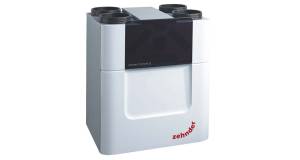 Lung disease patient: Zehnder MVHR “the best thing I’ve ever had”
Lung disease patient: Zehnder MVHR “the best thing I’ve ever had” -
 Why airtightness, moisture and ventilation matter for passive house
Why airtightness, moisture and ventilation matter for passive house -
Awaab Ishak’s death shows that building physics are a life and death matter
-
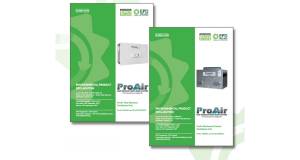 ProAir pioneers with EPDs for ventilation systems
ProAir pioneers with EPDs for ventilation systems -
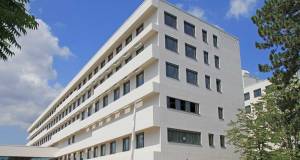 World’s first passive house hospital completed in Frankfurt
World’s first passive house hospital completed in Frankfurt -
 Let’s bring ventilation in from the cold
Let’s bring ventilation in from the cold -
 45,000 more Irish homes face radon risk, new maps reveal
45,000 more Irish homes face radon risk, new maps reveal -
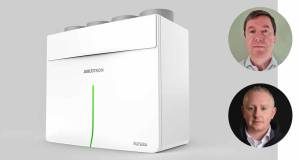 ProAir retooling for the future
ProAir retooling for the future -
 Ecological launch Inventer decentralised ventilation
Ecological launch Inventer decentralised ventilation -
 Poor ventilation a Covid risk in 40 per cent of classrooms, study finds
Poor ventilation a Covid risk in 40 per cent of classrooms, study finds -
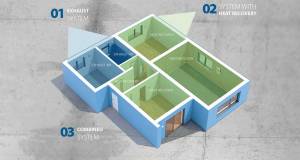 Efficient ventilation key to healthier indoor spaces – Partel
Efficient ventilation key to healthier indoor spaces – Partel -
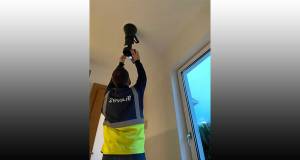 Evidence emerges of endemic ventilation regs breaches
Evidence emerges of endemic ventilation regs breaches

